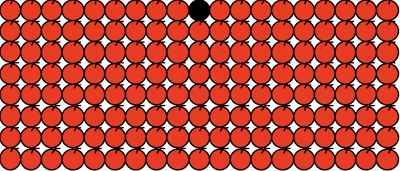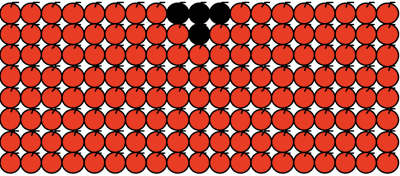Home > Topdrawer > Reasoning > Activities > Bad apples
Bad apples
Show students the first 'bad apples' picture.
Some apples are sitting in one row. Each day, any bad apple will turn any good apple that is touching it bad.
- On the first day, there is one bad apple.
- How many bad apples are there on the second day?
- On the third day, how many apples will be bad?
- How many bad apples will there be on the fourth day?
Ask students to explain their answers. What is the pattern of bad apples that is emerging? Ask pairs of students to talk about what generalisation could be made about the number of bad apples on any given day. Write it as a short 'rule'.
If there is a very long row of apples, how many bad apples will there be on the fifteenth day? Explain and justify the use of the rule.
Here is an array of apples — not just one row, but a whole tray of apples.
- On the first day, there is one bad apple.
- On the second day, there are four bad apples. Why?
Ask pairs of students to talk about what generalisation could be made about the number of bad apples on any given day.
Ask the students to explain and justify why their rules work.
How concisely can the general rule be written?
Use the rule to work out how many bad apples there will be on the fifteenth day.
You can download 'Bad Apples': Extension Ideas for Secondary Students for more ideas.


